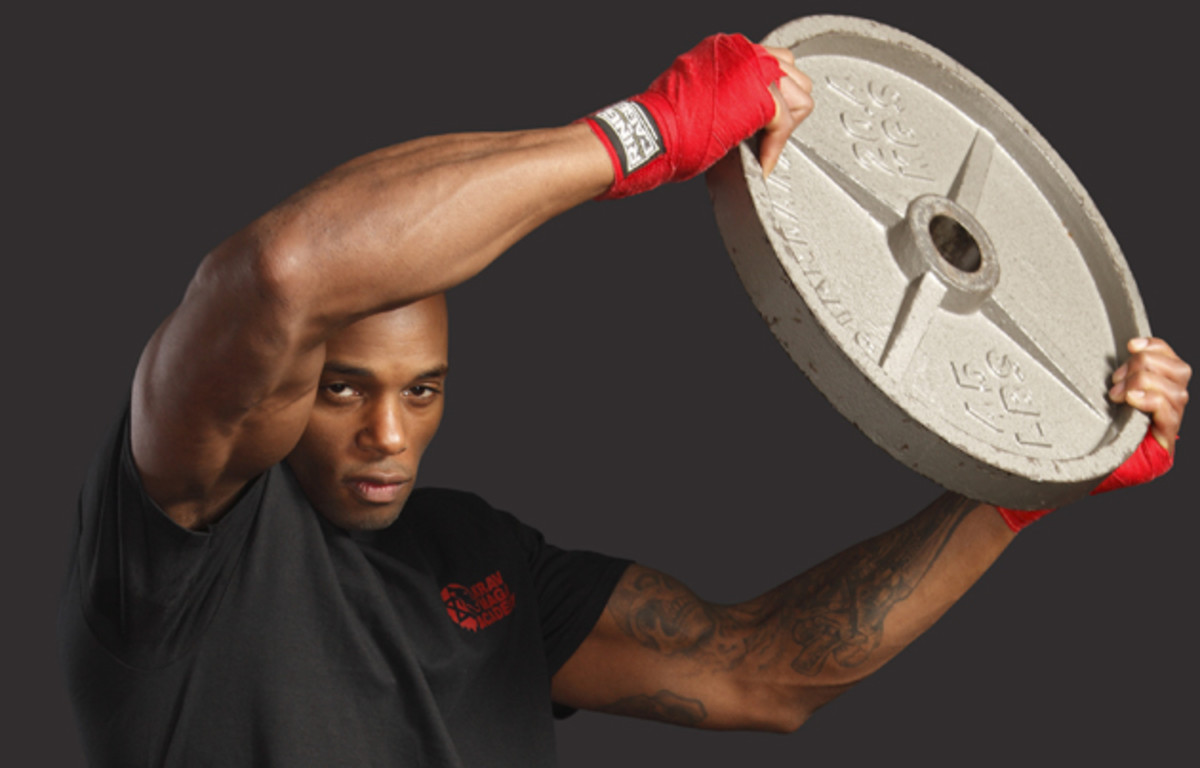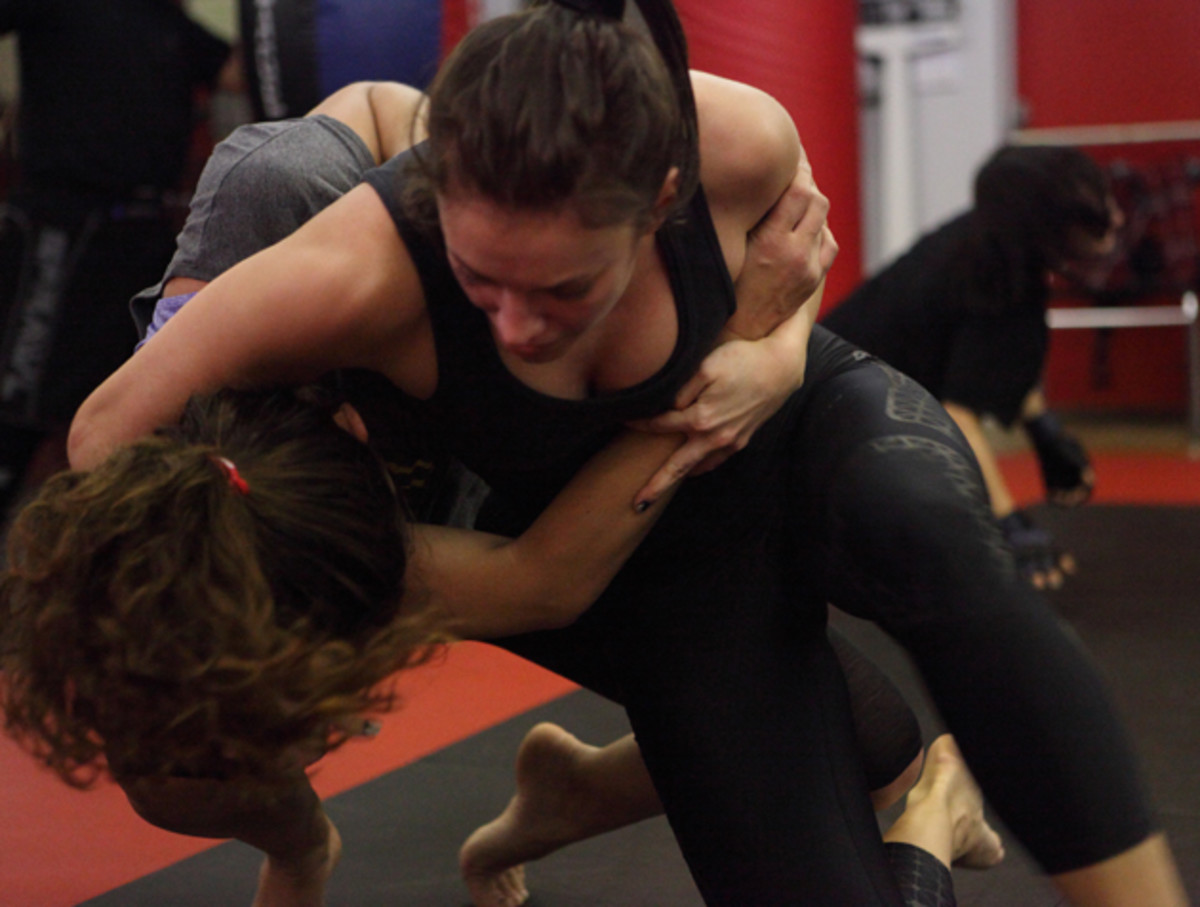How I learned to kill in five moves—and got a killer workout to boot

There’s only one rule in KravMaga: There are no rules.
The only objective is to cause as much damage as possible to the attacker—and get away.
“Every other form of martial arts has limitations—you can hit in the head, but no groin; you can punch, but you can’t bite in the face,” says Matan Gavish, a former Israeli Special Ops soldier who owns the Krav Maga Academy in New York. “But even those trained at the highest level still feel vulnerable when it comes to the world of no rules.”
Used in Israeli military training since the 1940s, Krav Maga (pronounced krahv ma-GAH) is only concerned with causing damage—don’t confuse that with pain, Gavish warns. Physical suffering is subjective. Each individual feels pain differently and tolerance can change based on many factors, including fitness level, adrenaline, drugs, alcohol, genetics, mindset and more.
Speed zone: Saints WR Brandin Cooks training to get even faster this season
But while our perception of pain may vary, you and I share the same soft spots—the eyes, nose, ears, jaw, throat, groin, pubic bone, knees and Achilles tendon—and that’s where maximum damage occurs.
Earlier last month I joined Gavish, a few staff members and more than 30 men and women at a typical Monday evening class at the Krav Maga Academy. Unlike some Krav Maga classes, fitness is a central theme throughout the entire session at the Academy. And it’s not because Gavish wants you to cancel your gym membership.
“When you get attacked, you get scared, no matter if you’re the greatest fighter in the world or a kid that just left the sixth grade. And when you get scared, your body goes into the flight-or-fight mode,” says Gavish. “You get a shot of adrenaline, heart starts to race, mouth gets dry and your knees buckle. And if you don’t train under those conditions, you’re not training for real life.”

From the first buzz of the timer set on the black mat-covered floor, we start with a high-intensity warm-up: a series of non-stop jumping jacks, high knees and butt kickers with simultaneous arm swings combined with some punching sequences. In between the upper cuts and jabs, we drop down to the floor for a quick push-up followed by plank holds, side kicks, lunges and more. With each completed rep, we add another until we’ve reached 10. Did I mention this is the warm-up?
Dripping sweat, I'm very aware that Gavish’s goal of raising my heart rate and exhausting my muscles has been met. Now it’s time to learn how to cause maximum damage.
“Aggression drills are designed to get your mind ready for combat after exhaustion takes place,” says Gavish. “When fear hits, it paralyzes. But it is not infinite. With training, you minimize that space between paralysis and fear and your reaction.”

To refrain from giving readers any information without proper instruction, I won’t go into the details of some of the aggression drills. But if I performed a specific move correctly, the attacker could suffer a blow to the groin, gouged eyes, a broken nose or even a fatal injury in seconds. The physical drills also translate directly into the mental aspect of KravMaga.
“Twenty people are holding you against the wall and then I tell you to try for two minutes to get out—you’re going to fail from the first second,” Gavish says. “The physical goal is to get out, but that’s not the reason why we do the drill. I want you to fight through failure. Were you able to get out with 20 people? No. But if you take all of that energy for 20 people, how much are you going to put on one person?”
Though mindset is key, building fitness—as for any sport—is equally important. UFC fighter Moti Horenstein is known to be vocal about the benefits of Krav Maga and Gavish says the conditioning can help in various sports, as well as in real-life situations. To build strength, Gavish suggests shadow boxing with free weights, short sprints for explosiveness, plyometrics and resisted rotational movements for strong hips and abdominal muscles.
- MORE EDGE: Frank Kaminsky steps it up for the NBA draft
After just one session at the Krav Maga Academy, it’s easy to see why this type of “contact combat” is habit-forming for many.
“Professional athletes spend time on strength and conditioning, so when their adrenaline drops, they are used to working on pure exhaustion. In Krav Maga we try to emulate the same situation, to teach mental fortitude,” Gavish says. “After a while, your mind views an intimidating person as a collection of soft spots—I’m just looking at a groin, two knees, a pair of eyes, a throat. That’s it.”
